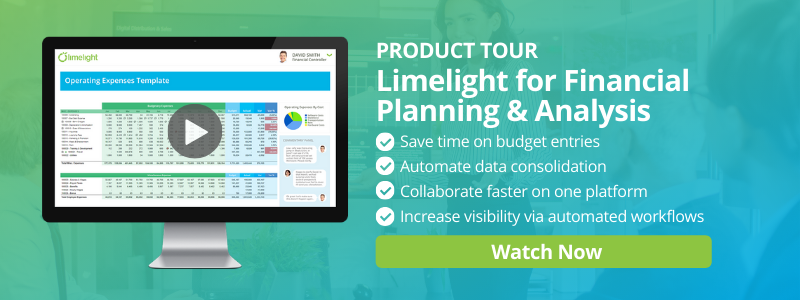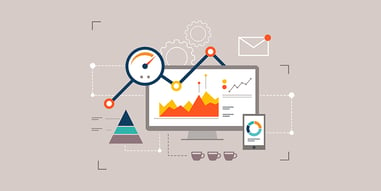.webp?width=450&name=Madonna%20Dennis_Author%20Bio%20and%20Pic%20-%20Big%20(1).webp)
Key Performance Indicators (KPIs) are critical for any organization in the healthcare sector that wants to track its business performance. All healthcare organizations, whether public or private, have felt the pressure of tightening budgets and keeping up with changing policies and regulations.
Particularly during COVID-19, Healthcare CFOs must now develop strategic plans to keep their organizations ahead of the curve. Having never faced a crisis with such widespread effects, it can be difficult to model financial scenarios that involve a future influenced by the pandemic.
Healthcare organizations that want to ensure their business objectives are still being met, even during this challenging time, will need better tools to track and measure their data. Accurately measuring Healthcare KPIs not only gives CFOs up-to-date information but allows them to quickly make adjustments as needed.
FP&A software can help healthcare organizations measure their KPIs, and make improvements swiftly and effectively. Let’s look at 5 ways a FP&A solution can help healthcare companies navigate COVID-19, and set themselves up for success in the future.
1. Model Multiple Scenarios and Quickly Execute on Potential Outcomes
Tracking an organization’s needs during the crisis requires real-time data and systems that can perform complex scenario modeling in seconds.
Healthcare organizations using FP&Asoftware will be able to consistently plan and forecast multiple scenarios. The difference between forecasts managed in spreadsheets and those managed in FP&A software is that actuals are updated on a frequent and consistent basis without manual effort.
Healthcare KPIs such as revenue, supply costs, service costs, average pay, and average hours worked can be tracked and updated in real-time, giving managers access to actionable insights now and not later.
2. Plan Across Various Financial and Patient Dimensions
Budgeting and forecasting in healthcare rely on integrated data from a variety of sources. Keeping up with all of the planning required by healthcare organizations requires a more sophisticated system than spreadsheets. In order to forecast realistic margins, healthcare organizations can benefit from a solution that automates the consolidation of their data.
In healthcare, revenue planning and reporting involve multiple dimensions, such as the type of patient or type of service offered. As such, forecasts should be linked to both financial and patient data sources to achieve accurate planning across all areas of the organization.
FP&Asoftware can incorporate data from individuals, teams, and departments, and track Healthcare KPIs related to each. With FP&A technology in place, CFOs can draw on their available data and create alternative financial plans. The technology can show the effect these plans have on overall strategy and allow CFOs to decide on the best action moving forward.
3. Enable Detailed Human Resource Planning
One of the major impacts of COVID-19 is the need for an increased workforce to care for patients. Responses from healthcare organizations could include premium pay, additional staff, sick leave, or even a reduction of benefits. All of which would need to be planned for in the short-term and long-term future.
Human resources represent a large portion of expenses for most healthcare organizations. However, extra care should be given to simply reducing this cost, as this could lead to a decrease in service quality. Healthcare organizations should consider the potential impact, as permanent employee wages is a useful KPI for business objectives around business costs and budgeting.
With changing work conditions and regulations, many healthcare organizations are turning to technology to help with compliance. FP&A software can help organizations unify data from their financial and HR departments to better spot human resource factors affecting the business. Healthcare organizations can track top-performing teams and measure resources across a wide range of metrics to avoid over or understaffing.
4. Create Comprehensive P&L, Balance Sheet, and Cash Flow Statements
COVID-19 presents a number of changes to typical KPIs measured by healthcare organizations including accounts payable, average treatment charge, and supply chain costs.
Hospitals may need to extend payment terms for patients during the pandemic, as many could be without an income or waiting for government aid. The average treatment charge is typically measured with the objective to reduce hospital costs, but this could change with the pandemic. Supply chain costs are also heavily affected, as any shortages cause a spike in supply costs, meaning hospitals may need to plan for more inventory.
In terms of cash flow, issues are likely to arise around a slower claims process and a reduction in point-of-service collections. Organizations may even face increases in governmental receivables. As such, healthcare organizations must be prepared to create P&L, balance sheet, and cash flow statements that reflect their constantly shifting operations.
5. Use Dashboards to Analyze KPIs and Perform Variance Analysis
Healthcare organizations will need to perform variance analysis to see the true impact of COVID-19 on their planning. To better visualize active planning, dashboards can be set up on FP&A software to help healthcare finance professionals quickly evaluate Healthcare KPIs.
For example, dashboards can be set up to help healthcare organizations analyze the difference between headcount costs and revenues, and accounts receivable and sales. All data is pulled in and consolidated to present an overview that is customized and relevant to each team member. CFOs and managers can see information that pertains to them, and slice and dice the data to reveal the reasoning behind numbers.
Because the dashboard is linked to living budgets and reports, when changes are made, they are automatically reflected in the visualization. Dashboards can be set up to track all KPIs at once, giving a comprehensive look at the organization. Healthcare organizations can then easily perform variance analysis with their KPIs in one view.
The Importance of Rolling Forecasts to Healthcare Organizations
The COVID-19 crisis exposes the need for healthcare organizations to use rolling forecasts over traditional spreadsheet-based planning.
Whereas before, annual forecasts and budgeting were enough to keep healthcare organizations on track, now more frequent forecasts are required to cope with the demands of COVID-19. Hospitals can greatly benefit from budgeting based on rolling forecasts, as they provide continuous real-time data.
Rolling forecasts incorporate historic and current operational data and can be adjusted for one-time events. The ability to quickly model scenarios is indispensable and can be used to update projections for the next 6,12 or 18 months. Rolling forecasts would also help perform variance analysis, offering a view of actuals versus budget in one sheet that is constantly updated without manual effort. This process has given many hospitals a better picture of current and future performance and has allowed them to make timely data-backed decisions as necessary.
To see how FP&A software can help healthcare organizations create flexible and more accurate forecasts, take a quick product tour.







